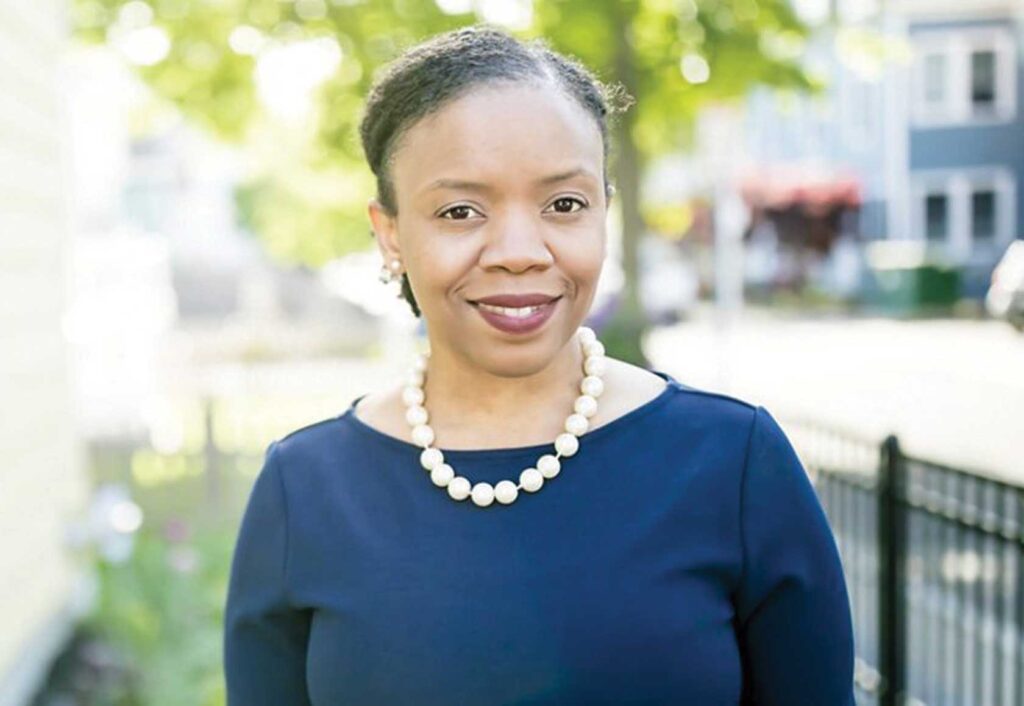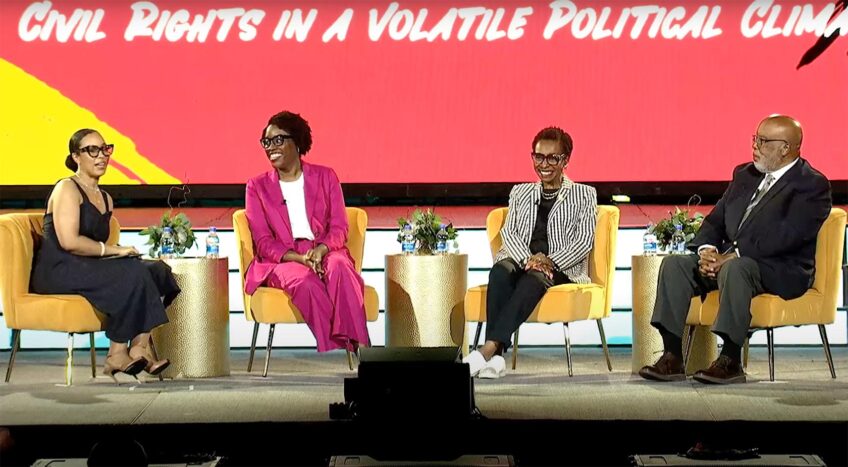Manikka Bowman takes the helm at Nature Conservancy
Hire offers glimpse into leadership diversity at green nonprofits

When Manikka Bowman takes charge as the new executive director of The Nature Conservancy in Massachusetts next month, she will be one of a small number of leaders of color who head environmental and conservation organizations in the state.
“[Bowman] is the total package,” said Lisa Rosen, who chairs the conservancy’s board of trustees.
Bowman, who is Black, officially starts her new role next month, and her appointment offers a glimpse into the narrow field of leaders of color in green nonprofits in the state.
The lack of diversity issue persists on a larger scale. Of 73 nonprofits, just over 30% of organization heads identified as people of color, according to a 2023 report from Green 2.0, a national organization focused on diversity in environmental nonprofits.
That lack of representation can lead to less focus on environmental justice communities — places that have a high concentration of people of color, low-income populations or people with limited knowledge of English, environmental justice advocates say.
These advocates point to barriers that may prevent people of color from either obtaining or keeping leadership jobs, including low wages and lack of support.
Leadership diversity in environmental agencies is critical for targeting predominantly marginalized communities that often bear the brunt of climate impacts. It is key to advancing environmental goals, said Elischia Fludd, who recently wrapped up her role as executive director of the Massachusetts Climate Action Network.
“I want to say as a humanitarian, ‘Well, it doesn’t really matter’ or, ‘It shouldn’t really matter,’ but the reality is that [a leader] who is a Black person or a BIPOC person is going to come with the understanding of what it’s like to be under suppression, oppression, intolerance, bigotry, complacence,” said Fludd, who is Black and Indigenous.
Maureo Fernández y Mora, who serves as co-interim director of the Massachusetts branch of Clean Water Action, said leaders of color can be better at connecting with people in certain communities who may need more buy-in to join the climate justice movement and who do not necessarily consider themselves environmentalists.
He said he’s seen initiatives fail when a broad climate solution wasn’t connected to related issues, such as racial and economic justice.
“Prioritizing that intersectionality, to me, is one of the things that makes campaigns stand out and be successful,” said Fernández y Mora, who identifies as Latino.
Rosen, of the Nature Conservancy’s board, said Bowman has the experience and abilities to bring more communities to table, both through her skill set as a storyteller and her connections to communities of color.
“The impacts aren’t tangible right away, and people only pay attention when there’s a disaster,” said Rosen. “If we had a cohesive story and a powerful story then we could touch a lot more people and bring a lot more people along, which is what we need in order to scale our impact.”
Bowman formerly served as the director of policy at the Urban Land Institute Boston, a real estate research nonprofit. Her time with that group gave her foundational knowledge about how climate affects local communities, Rosen said.
She has also led Project REAP, a real estate incubator for diverse real estate candidates, served as vice chair of the Cambridge School Committee and worked on grassroots political organizing.
While advocates say they want more diversity in the top positions in the environmental movement, Fludd said that it is also critical that those who do get the jobs have the support they need to push for change.
Fludd mentioned the term “glass cliff,” used to define the phenomenon of women or people of color vaulted to top-leadership positions only to struggle and often be set up to fail.
A leader of color needs a board and staff that’s 100% behind them to really turn the tide, Fludd added.
“It’s important that the top leadership that is going to be partnering with the new hire are people that can lead by example,” she said. “If they can’t, then they need to step aside so others who are ready and willing and already walking that walk can rise in their place. Otherwise, it’s actually counterproductive, because the hiring doesn’t make any difference to true change.”
Fernández y Mora said organizations should be careful not to bring on leaders of color and then expect them to come up with unique solutions purely because of the color of their skin.
“Sometimes we fall into the trap of setting up leaders of color to be expected to do the impossible, simply because we are people of color,” he said.
One challenge that limits the ability of people of color to fill these roles is the salary paid to nonprofit employees. Fernández y Mora said that, in his experience, many people who join nonprofits are those who have family support to supplement low wages.
“If we’re not providing the economic viability to young organizers coming into the environmental movement, we’re already sort of squeezing out a number of people who might actually be able to make a career on the leadership level, but can’t afford, for lack of a better term, the startup costs,” he said.
Data shows racial disparities in environmental nonprofit workforces as well. In the Green 2.0 report, nearly 60% of full-time staff in the nonprofits they considered were white. The proportions of Black staff and Latinx staff both hovered around 12%.
Fernández y Mora said taking things like compensation into consideration can help foster a more diverse workforce to move into leadership roles.
“Looking at things like salary and benefits at the entry level [is] going to be really, really important to creating an actual bench of future leaders of color who can move into these positions,” he said.






